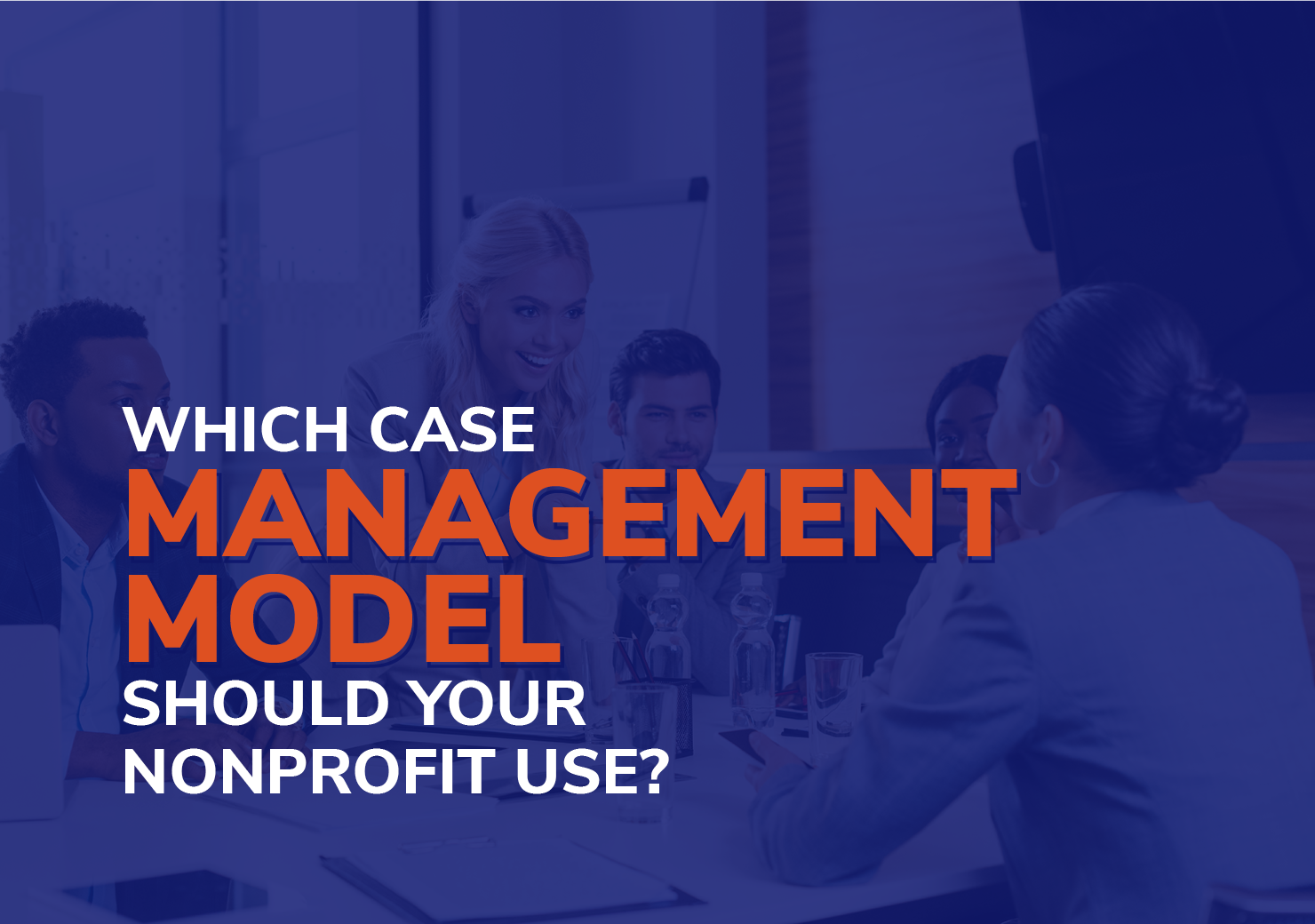Which Case Management Model Should Your Nonprofit Use?

If your nonprofit provides individualized services to clients or program participants, it’s crucial to have a system in place for tracking and managing service delivery. This is where case management comes into play. Case management refers to the coordinated process in which service providers assess, plan, implement, and monitor service delivery for each client or participant.
Effective case management is essential for providing quality services, but it looks different depending on your organization type and unique client needs. For example, a healthcare organization’s process might vary greatly from that of a family services nonprofit. Fortunately, there are several established approaches to case management, known as case management models, that can provide you with clear guidelines and processes.
If you’re new to case management or are unsure which model to use, don’t worry. We’ll explore each of the core case management models to help you determine the best fit for your nonprofit.
1. Brokerage model
The brokerage case management model was named because it involves “brokering” services rather than providing them directly. Case managers instead connect clients or participants with other community resources that they can use to address their needs through referrals.
Using this model, your service delivery process may look something like this:
-
During intake, the case worker assesses the client’s needs and identifies resources that may help.
-
The case worker provides the client with referrals for relevant community resources they can access independently (such as counseling or a job training program).
-
After just one or two contacts, the client uses the referrals to access resources, and your nonprofit’s work is done.
You might use the brokerage model if community members have trouble finding or accessing the services they need. This model typically works best for nonprofits with large numbers of clients or participants and a wide network of community contacts.
For example, a school system might use the brokerage model to refer students with behavioral needs to outside counseling services. Or, a family services organization serving a low-income community could support expecting mothers by connecting them with affordable prenatal healthcare and education classes.
2. Clinical model
When many people think of case management, they picture providers using the clinical model — someone providing one-on-one counseling or support to a client over an extended period. This model focuses on providing more tailored services by establishing long-term relationships with clients and getting unique insight into their needs.
Typically, the clinical model involves providing direct services and encouraging clients to seek support from their own networks. Case managers help remove barriers (whether social, emotional, mental, or physical) so clients can more easily access long-term support.
Your nonprofit or public sector agency should use the clinical model if your organization provides:
-
Mental health services.
-
Addiction recovery support.
-
Treatment for patients with chronic health issues.
-
Similar types of one-to-one support.
Because this case management model requires case workers to get to know clients and their needs over time, you’ll need a robust case management platform that allows them to record, update, and analyze client data in one place. This way, case managers can learn from their data, adjust treatment plans, and ultimately improve service delivery and client outcomes.
3. Strengths-based model
Think of the strengths-based model as the clinical model with one key difference. Instead of providers steering the process, clients lead the way in identifying and addressing their own needs. This way, clients learn to take ownership of their progress and feel empowered to seek out and access community resources on their own, developing key skills in the process that will aid in their long-term success.
Similar to the clinical model, the strengths-based approach involves encouraging clients to leverage both formal and informal support (from the community, other resources, and their personal networks).
Your nonprofit might use the strengths-based model if you work with clients or participants on rehabilitation, recovery, or adjusting to major life changes. For instance, an organization that supports local veterans might use this model to help those who recently returned from service adapt to everyday life as a civilian.
Because of the long-term, client-driven nature of this model, it’s important to plan and implement ongoing measurement strategies for case management. Outline clear desired outcomes for each client (based on their input and goals), then note the impact your services make over time and whether you need to adjust your care plans.
4. Intensive model
Finally, the intensive model applies to organizations that work to address urgent, extreme client needs (such as escaping domestic violence or recovering from an intense mental health crisis). Using this model, case managers provide clients with substantial, immediate support before referring them to less intensive services once they’re ready.
A client receiving intensive care might go through the following process with your nonprofit:
-
The client arrives at an in-patient facility and gets assessed by a case manager.
-
The client receives 24/7 support and access to services for a short period of time, such as two days.
-
If deemed appropriate, the case manager refers the client to outpatient services and other community resources they can use when they exit.
-
The client moves on to less intensive services to continue addressing their needs.
If your nonprofit regularly helps community members in emergency situations or clients facing immediate hardships, this might be the best model for your organization.
Choosing the right fit for your nonprofit’s programs
Now that we’ve explored each model, start evaluating which one(s) would be right for your nonprofit. When you clearly outline the appropriate procedures and approaches for your nonprofit’s case managers (and provide the tools to streamline them), you’ll not only improve service delivery and client outcomes — you’ll also boost case manager engagement and retention.
If you’re still unsure which model is the best fit after reading about each one, talk to your existing case managers or staff. Ask them how they approach client cases and what they believe are their biggest challenges day-to-day. Would one of these case management models provide more structure or guidance for those problems?
Remember that these models are only sets of guidelines — the details of your nonprofit’s case management process will still be unique based on client needs and available resources. Don’t be afraid to pivot when necessary or try out a different model if one isn’t working.
When you’re ready to get started with your chosen model, look to peer organizations. Explore other organizations’ public resources to see which case management models they use and how they put them into practice. For instance, you might visit healthcare websites, read intake forms, or ask nonprofit leaders which model they use and how it helps them deliver quality care.


